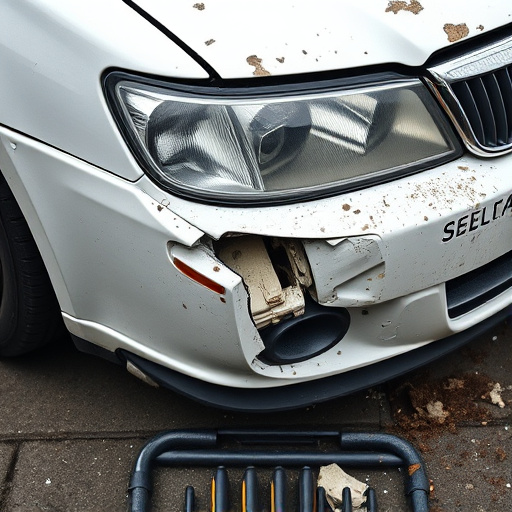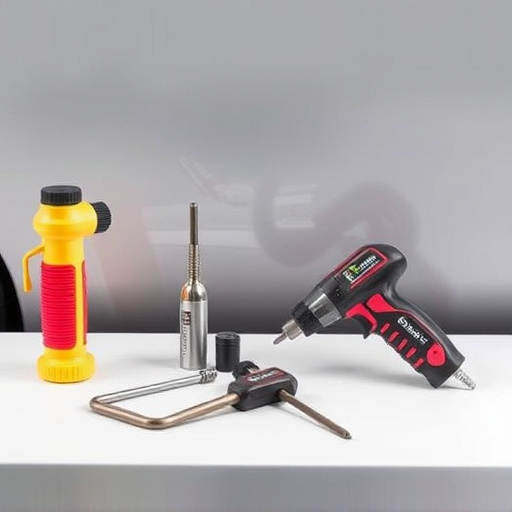In today's digital era, auto body shops that prioritize transparent repair processes gain a competitive edge. Open communication about repair methods, costs, timelines, and warranties builds trust with clients, reduces complaints, and encourages loyalty. This strategy fosters strong relationships through clear updates, explanations, and prompt issue resolution. Measuring success via complaint volumes and customer satisfaction surveys quantifies the positive impact of transparency, allowing shops to continually improve their services.
A transparent repair process is transforming customer experiences, significantly reducing complaints. Today’s consumers demand clarity and communication, expecting their issues to be addressed efficiently and honestly. This article delves into three key strategies: understanding customer expectations through transparency, implementing a clear and communicative repair process, and measuring success by tracking complaint reduction and boosted customer satisfaction. Discover how adopting these practices can revolutionize your business and foster lasting client relationships.
- Understanding Customer Expectations: The Foundation of Transparency
- Implementing a Clear and Communicative Repair Process
- Measuring Success: Tracking Complaint Reduction and Customer Satisfaction
Understanding Customer Expectations: The Foundation of Transparency

In today’s digital age, customers expect transparency and clear communication from every business they interact with, including auto body shops and auto repair services. The transparent repair process is a fundamental aspect that sets apart exceptional auto repair shops from their competitors. It starts with understanding customer expectations and addressing them proactively.
When an auto body shop or auto repair shop communicates openly about the repair process, estimated costs, turnaround times, and available warranty information, it builds trust with its customers. This level of transparency ensures that clients are well-informed and feel respected throughout their interaction with the shop. As a result, it reduces misunderstandings, surprises, and subsequent customer complaints significantly.
Implementing a Clear and Communicative Repair Process

A key aspect of reducing customer complaints lies in implementing a clear and communicative repair process. When customers understand what to expect during the automotive collision repair or auto body repair journey, they feel more at ease. This involves providing transparent updates on their vehicle’s progress, explaining every step of the repair process, and addressing any concerns promptly. Well-informed customers are less likely to be dissatisfied when they see their car undergoing meticulous repairs.
A transparent approach fosters trust by ensuring customers are actively involved in decision-making. It encourages open dialogue where questions are encouraged and answered honestly. By adopting this strategy, repair shops can mitigate potential complaints before they arise, creating a positive customer experience that promotes loyalty and repeat business.
Measuring Success: Tracking Complaint Reduction and Customer Satisfaction

Measuring success is a vital component of any effective strategy, and when it comes to the transparent repair process, tracking its impact on customer complaints and satisfaction is key. By implementing this process, automotive body shops and tire services can expect to see a notable shift in customer feedback. The reduction in complaints is a direct result of improved communication, clearer pricing structures, and efficient service delivery.
To gauge the effectiveness, businesses should monitor complaint volumes over time, comparing pre- and post-transparent repair process periods. Additionally, customer satisfaction surveys can provide qualitative insights, revealing how clients perceive the new approach. This data will help identify areas for improvement, ensuring that vehicle repair services remain responsive to customer needs and preferences, fostering long-term loyalty.
A transparent repair process is not just about fixing products; it’s about fostering trust with customers. By implementing clear communication at every step, businesses can significantly reduce customer complaints and boost satisfaction levels. This article has highlighted the importance of understanding customer expectations, establishing open channels of information, and measuring the success of these efforts through complaint tracking. Embracing a transparent repair process is a game-changer, ensuring long-term customer loyalty and a positive brand image in today’s digital era.














